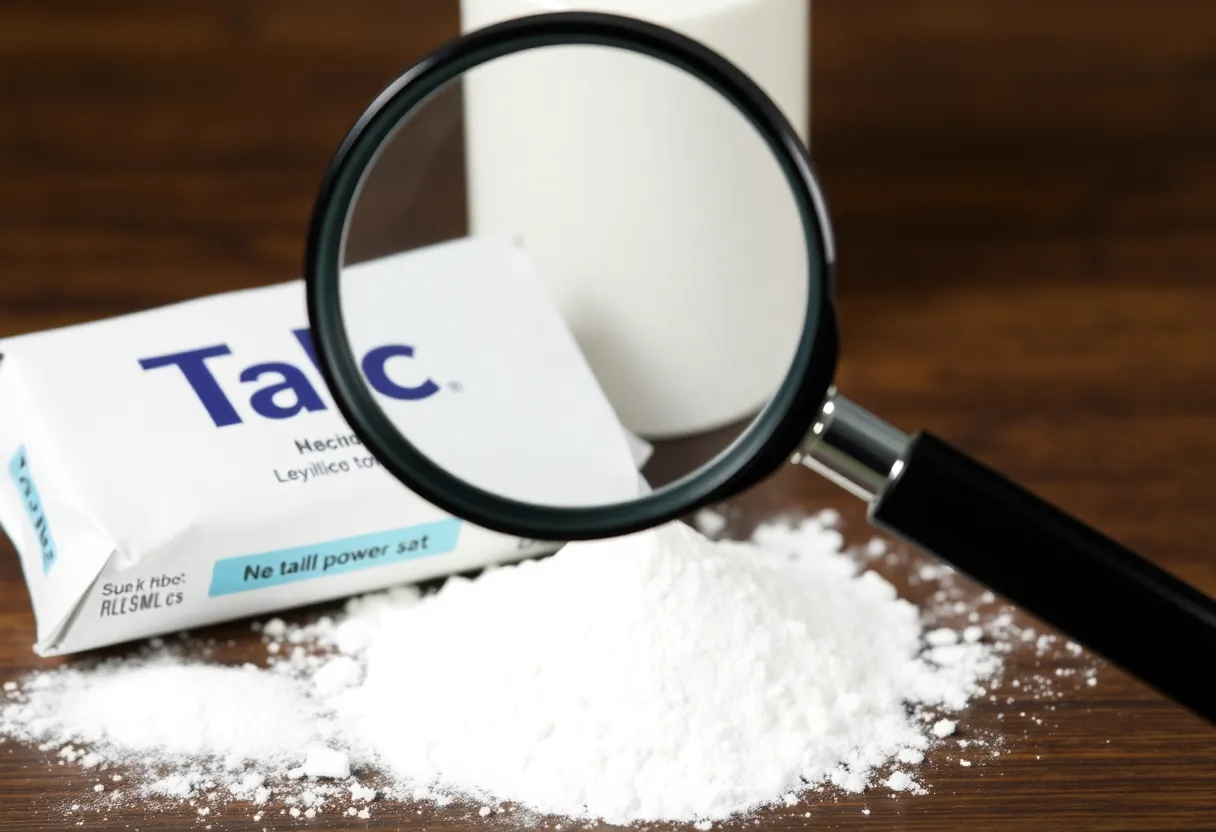News Summary
The safety of talc-based products has come under scrutiny due to potential asbestos contamination, with thousands of lawsuits filed against major manufacturers.
Shocking Revelations: The Dark Side of Talc-Based Products
In recent years, there has been a growing concern surrounding the safety of talc-based products, particularly in relation to their potential contamination with asbestos. The intertwining of these substances has raised alarms among health experts and consumers alike, spurring numerous lawsuits and claims against major manufacturers.
Talc and Asbestos: A Dangerous Pairing
Talc is frequently used in various consumer products, including baby powders, cosmetics, and body powders. However, this \b>mineral occurs near naturally occurring asbestos deposits, posing a significant risk of contamination during the mining and processing phases. The International Agency for Research on Cancer (IARC) classified talc as “probably carcinogenic to humans,” due to its association with ovarian cancer and mesothelioma.
Regular use of talc-based products has been linked to a 33% increased risk of ovarian cancer, making it imperative for consumers to be aware of the potential dangers. Despite this alarming evidence, companies like Johnson & Johnson (J&J) have historically denied any connection between their products and cancer, even amid mounting scientific research.
The Legal Battle: Victims Seek Justice
Since 1979, legal firm Sokolove Law has been at the forefront of helping victims of asbestos exposure, securing over $5.6 billion for countless individuals and families affected by these hazards. Current estimates suggest that more than 62,000 talcum powder lawsuits have been filed against J&J, with many more expected as individuals step forward with similar claims.
Eligibility for filing a talcum powder lawsuit hinges on having a cancer diagnosis linked to the use of talc products. Furthermore, family members of deceased victims may pursue compensation for their loss. The legal landscape is rife with opportunities for recompense, but claimants must navigate the complexities of the court system and adhere to statutes of limitations that vary from 1 to 6 years.
The Unfolding Court Drama
Numerous past lawsuits have culminated in staggering settlements, including a jaw-dropping $4.69 billion awarded to 22 women who attributed their ovarian cancer to J&J’s baby powder. However, the company has faced significant challenges in its attempts to settle these claims expediently. In May 2024, J&J presented an $8 billion settlement proposal to address ongoing ovarian cancer lawsuits, which was swiftly rejected by the courts in March 2025.
The rejection resulted from a lack of support from ovarian cancer victims and fundamental flaws in the voting process. Reports indicate that over 60,000 ovarian cancer victims may seek individual compensation, emphasizing the need for businesses to take product safety seriously and to be held liable for any negligence.
The Enduring Impact of Asbestos Contamination
Asbestos contamination during talc mining can lead to devastating health issues, potentially surfacing many years after the initial exposure. J&J has been embroiled in controversy since reports of asbestos in their talc products surfaced in three separate labs between 1972 and 1975. Astonishingly, the company failed to inform the FDA of these findings, raising serious ethical concerns regarding the safety of their consumer products.
With ongoing litigation and court battles, the future remains uncertain for J&J and the claims against them. Their attempts to use strategies like the “Texas Two-Step” to file for Chapter 11 bankruptcy to circumvent settlement claims have been thwarted by courts, affirming the imperative for corporations to ensure transparency and safety.
Seeking Legal Support
Individuals affected by talc exposure or related cancers are urged to contact legal professionals equipped to navigate the intricacies of talcum powder lawsuits. Law firms such as Sokolove Law provide specialized support, connecting patients’ cancer diagnoses to their history of talc product use.
As more victims gain awareness of their rights and the potential for compensation, the number of pending lawsuits is likely to grow, increasing the urgency for accountability. The alarming link between talcum powder use and serious health risks serves as a crucial reminder for consumers to remain vigilant and informed about the safety of the products they use daily.
Deeper Dive: News & Info About This Topic
HERE Resources
Johnson & Johnson Faces Major Setback in Baby Powder Lawsuit Settlement
Wakefield Council Announces Temporary Closure for Asbestos Removal at Dovecote Lodge
Family’s Heartbreak: Mesothelioma’s Tragic Impact After Asbestos Exposure
The Heartbreaking Story of a Young Mesothelioma Victim
Asbestos Storage Sparks Concern in Pacific Palisades Park
Global Asbestos Awareness Week: A Vital Reminder for Workers and Communities
Concerns Emerge Over New EPA Appointees and Asbestos Regulation
Spanish Embassy’s Cultural Center Faces Urgent Asbestos Crisis
Mesothelioma Compensation: A Vital Resource for Affected Families
Johnson & Johnson’s Baby Powder Bankruptcy Settlement Denied: A Blow to Asbestos Litigation
Additional Resources
- The New York Times: Johnson & Johnson Bankruptcy and Talc
- Wikipedia: Talc
- Reuters: J&J’s Battle Over Baby Powder Settlement
- Google Search: Talc products law cases
- WSFA: Judge Tosses Johnson & Johnson Bankruptcy Plan
- Encyclopedia Britannica: Asbestos
- Drugwatch: Judge Rejects J&J’s Talc Settlement Plan
- Google News: Talc and asbestos lawsuits



















